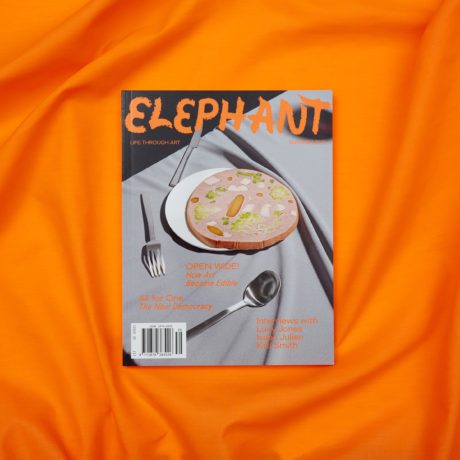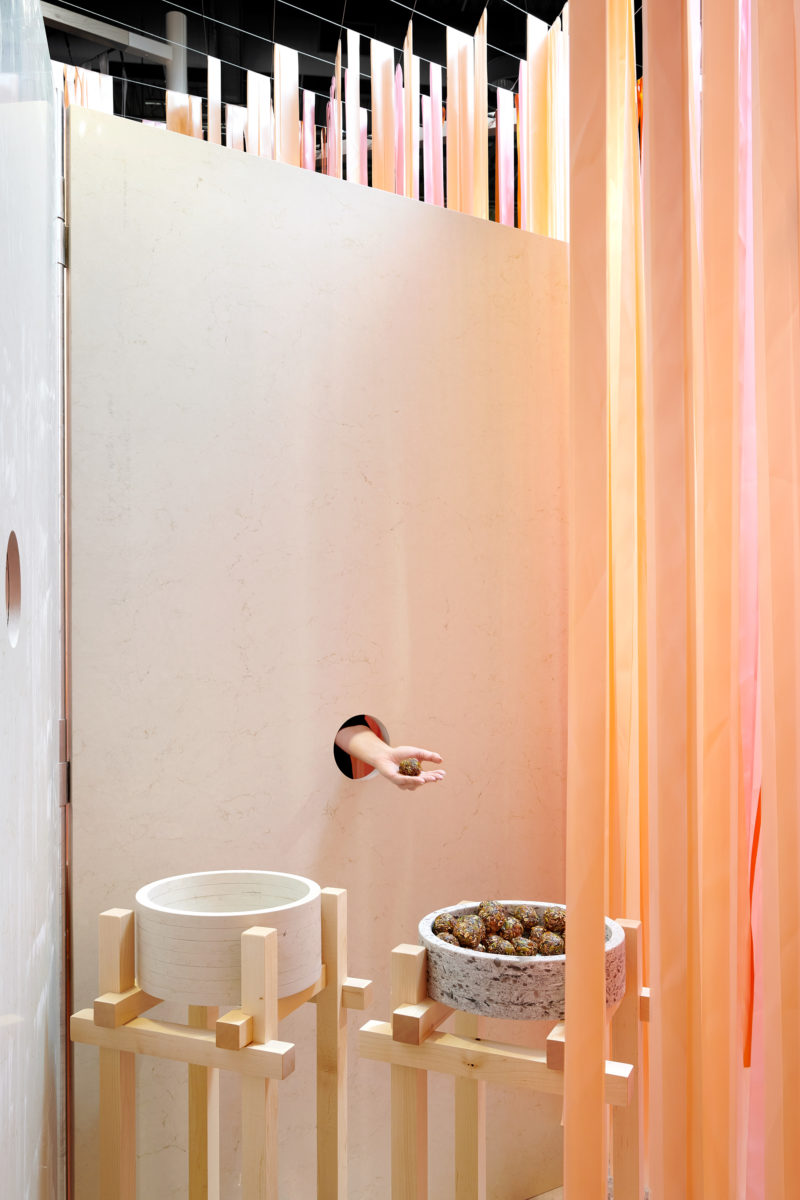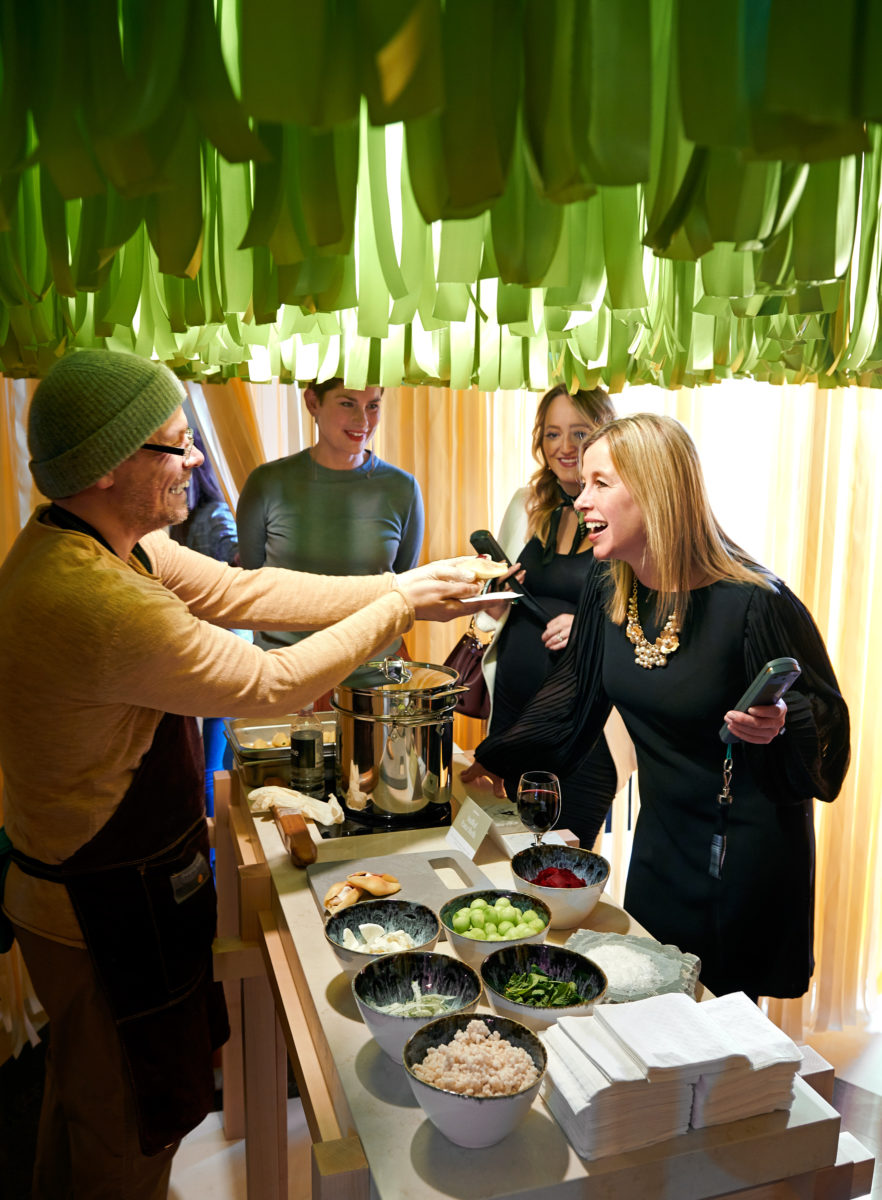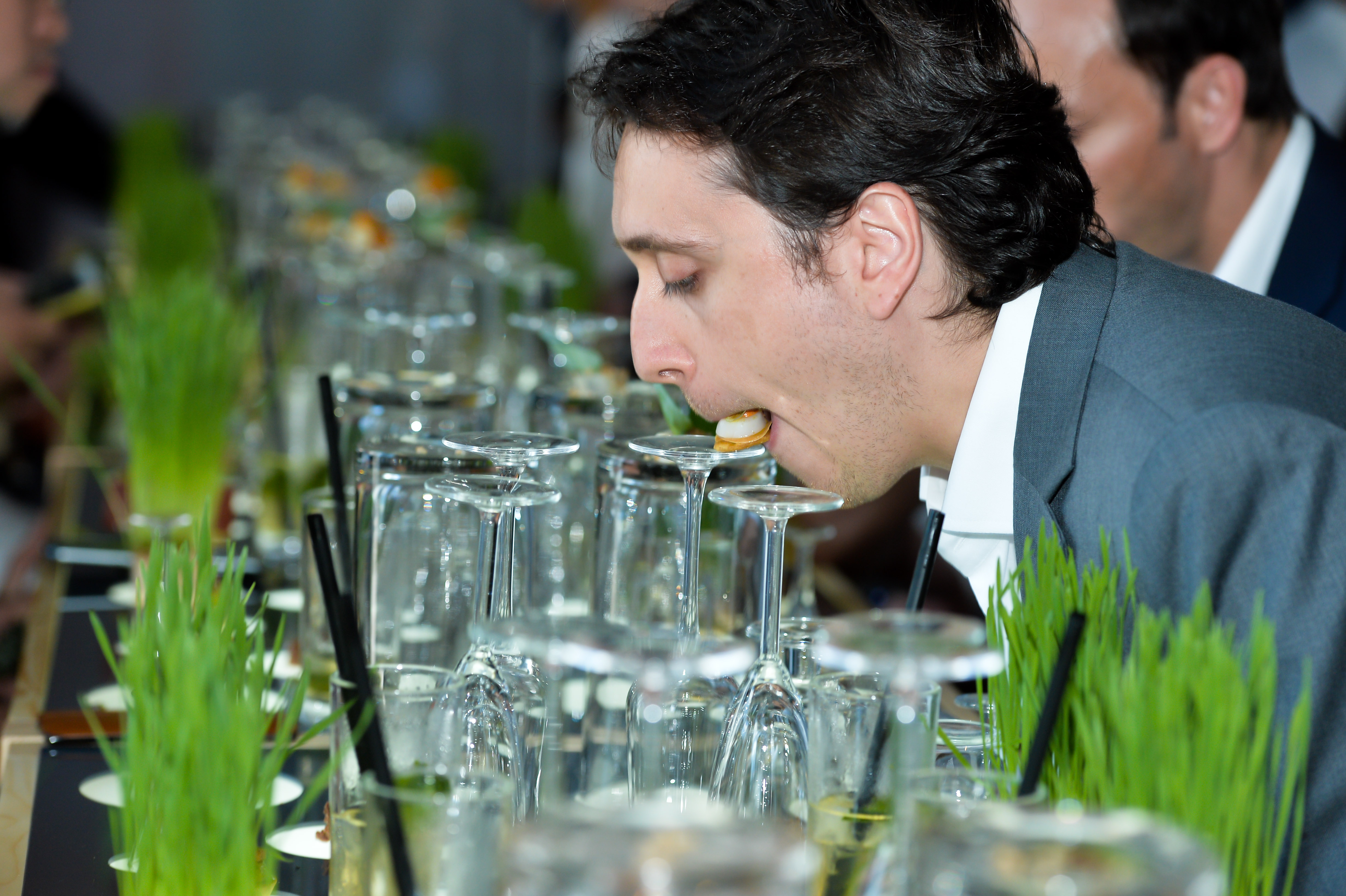
What’s behind your interest in food in design? Your work is fairly idiosyncratic, at times uncomfortable, revelatory and confrontational. This isn’t about laying tables and coming up with Michelin star cuisine is it?
I think it’s really exciting to make something that people can put inside their bodies! As a designer, this was an epiphany for me, but I was also very scared to continue along the path of food, because back when I graduated in 1999, you couldn’t really see where that would lead. I was afraid that I would never design any more objects. Back then, the Holy Grail for a designer was to make objects that would enter into a museum. Since then, I’ve designed many objects and put stuff in museums, so that’s all fine.
In 1999 no one was really talking about food, it was just this thing that you took for granted, something that housewives and chefs were engaged with, not designers. Perhaps you’d get someone like Philippe Starck making mandala pasta, but he didn’t think about where the ingredients came from, it was just nice packaging and a nice shape.
There is a lot of interaction and performance in your work. How much of this is about changing our view of how we use food?
I think food is a really good tool to make people see the world in a different way, because they understand it and they have a relationship with it. I’m not designing food, it is more like an excuse to work with people. It is a vehicle for dialogue.
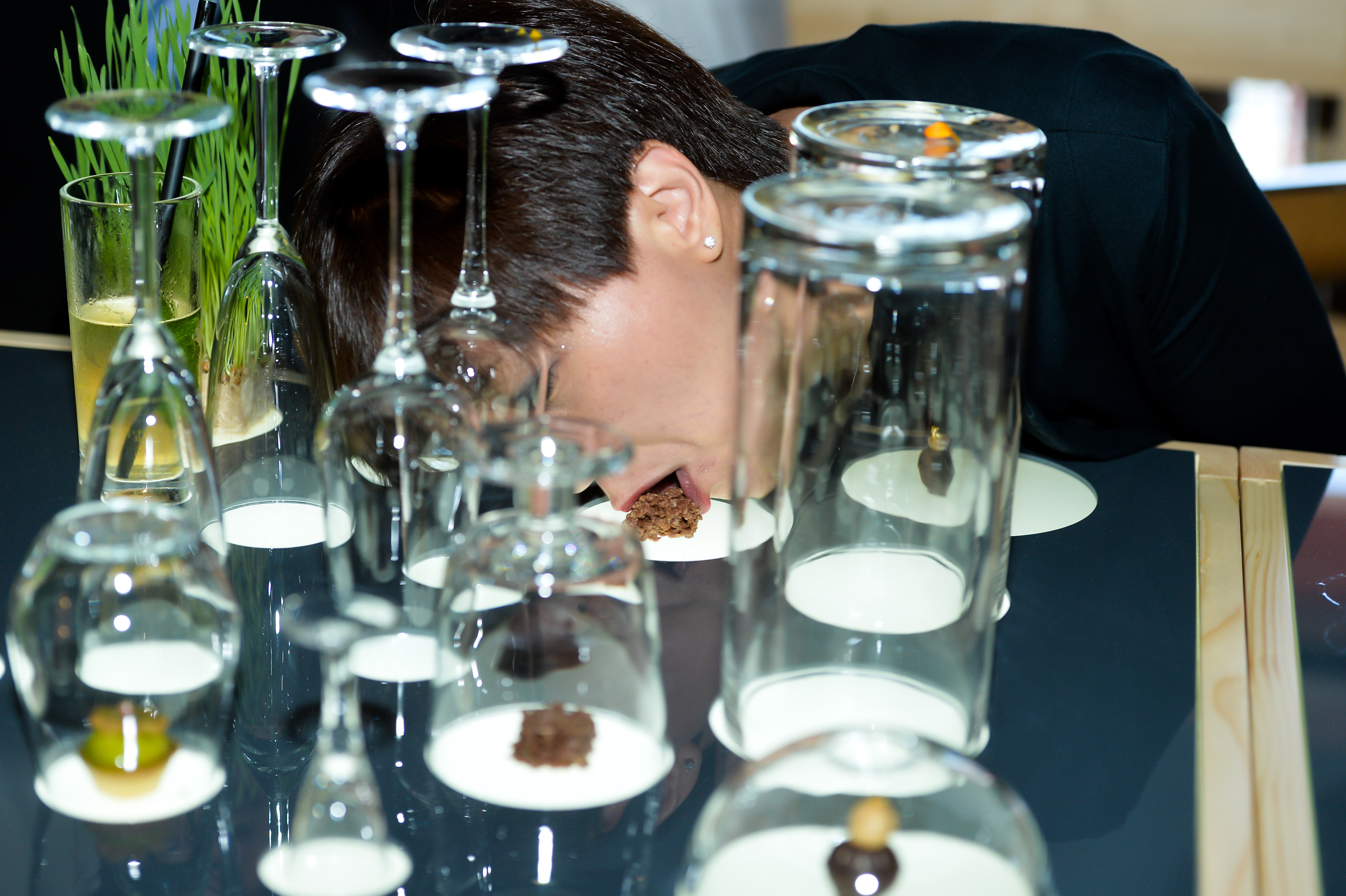
“We have so many things in abundance, but we don’t really see it, or want to see it”
What would you say the larger themes surrounding your work are?
It redefines design, because design was traditionally made from matter that would last. So, it’s how you approach the subject when you are actually dealing with something that will go away or be put inside someone else’s body. It requires a really different approach than that of making a glass vase, for example. Also, this links to big global issues dealing with obesity, climate change, lack of bio-diversity, polluted oceans, all of these things link back to food.
Food is a great metaphor, to have something so simple and tangible that we can all put into our mouths and touch, but it actually stands for all the larger problems in the world. It is really nice for me to have this very physical and very earthy, simple thing that I can interact with. There is also the sensorial angle. As a designer you always want to interact with the person that is using your product, so if you have something that smells, has a taste, has a texture, that you touch and engage with in a very intimate way, it becomes another fascinating part of the process.
- Seeds, 2019
One body of work particularly caught my eye—the tap water project where you tasted the waters of the Netherlands as if they were wines…
We have great tasting tap water in the Netherlands! It is super pure and super fresh, and sometimes it’s even better than bottled water. People don’t realize that, they just flush it through their toilets. So, I conducted this water tasting where I studied the terroir [the characteristic taste and flavour imparted to a wine by the environment in which it is produced]. People are serious about wine, they taste and compare it.
If you have tap water from all the cities of the Netherlands you can compare that too, because the flavour is different from every region; it’s the same story as wine. It’s about reframing something that was already there. Sometimes we don’t realize that we live in a land of plenty. We have so many things in abundance, but we don’t really see it, or want to see it, if we are completely focused on always developing something new.
What’s changed the most over the last twenty years that you’ve been working with food?
I think the field has changed incredibly. Now, as you can see, there is a department in Eindhoven Design Academy. It shows there is a vision, but there are also a lot of young people who are fed up with the traditional way of designing and they want to start focusing on other things.
“I think that everyone is done with just making lots of stuff that goes nowhere. It is not the way forward”
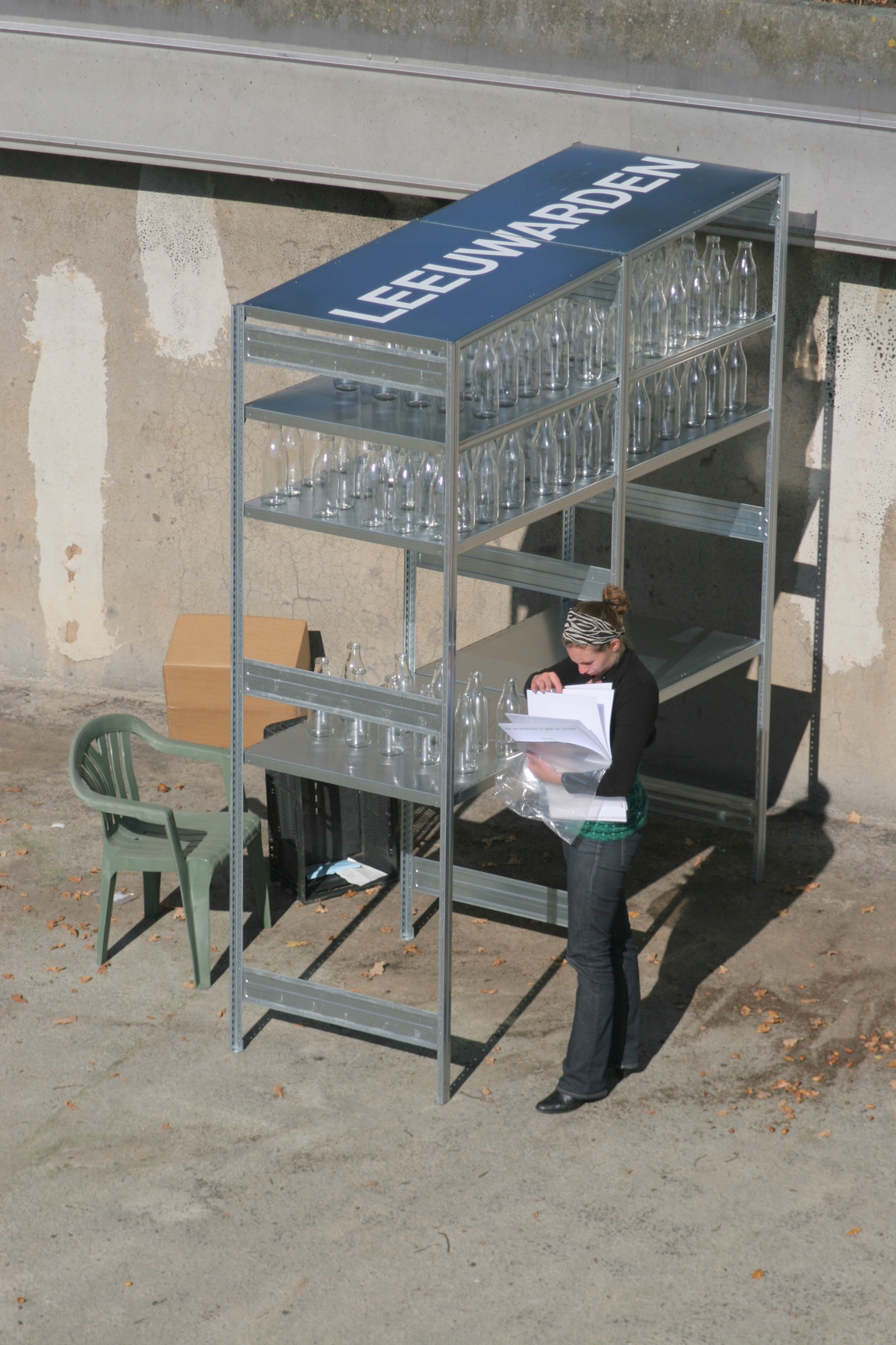
Tap Water Tasting, 2006
Is the root of this movement in design thinking?
It’s not just about solving a problem, it could be influencing a culture, or sharing a ritual, or showing the poetry in the food chain, for example. It can also be about enriching someone’s life. I see this not only in my department, but within the whole school; I think that everyone is done with just making lots of stuff that goes nowhere. It is not the way forward.
What’s the biggest misconception, or the most annoying thing, that people say about your work?
I think the misconception is that I make food look pretty. Obviously, it’s always a tricky thing. How can you briefly explain that it’s about more than making beautiful food? I try.
This feature originally appeared in issue 39
BUY ISSUE 39